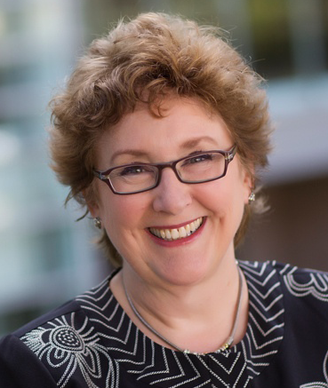Follow-Up Care and Screening for Cancer Survivors
In this interview we discuss follow-up care and screening for second primary cancers in cancer survivors.
Deborah Mayer, RN, PhD

As part of our coverage of the 2016 American Society of Clinical Oncology (ASCO) Annual Meeting held June 3–7 in Chicago, we are speaking with Deborah Mayer, RN, PhD, an oncology nurse practitioner and director of cancer survivorship at the University of North Carolina Lineberger Comprehensive Cancer Center. Dr. Mayer discussed the care and screening of cancer survivors at the meeting.
- Interviewed by Anna Azvolinsky
Cancer Network: Can you talk about the statistics on cancer survivors? What are some of the current numbers and the future projections?
Dr. Mayer: Currently, about 5% of the US population is a cancer survivor. That accounts for about 14.5 million people as of 2014, and that number is going to grow to more than 19 million people in the next decade or so. That number is increasing and many of those people are 5 years or more out from their diagnosis. We are going to be expecting the number of cancer survivors to grow in the future.
Cancer Network: What do we know about cancer screening rates and risks of second primary cancers among survivors of cancer?
Dr. Mayer: We know that surveillance for the cancer the person had is not the same as cancer screening for other types of cancers the person may be at risk for. Part of the follow-up care for those with cancer is surveillance for the cancer that they have. For a woman with breast cancer, a mammogram would not be considered cancer screening because she already had breast cancer, but having a colonoscopy would be considered screening because the woman did not have colon cancer. It’s important to know that the cancer doctors and nurse practitioners who are seeing these survivors really focus on the surveillance of the primary cancer. We often leave it up to the primary care providers to deliver general healthcare that includes cancer screening for other cancers, which means we have to coordinate and communicate the care between the primary care provider and the oncology team to make sure that is being done. Just because you’ve had one cancer does not mean you are not at risk for developing a second primary cancer. Those second primary cancers can occur because people are living longer, because of the treatments they’ve received, or because of genetic susceptibility of the first cancer that puts them at higher risk. So, we have to make sure the survivors are being screened for not only what the general population would need to have done, like a colonoscopy or mammogram, but possible associations with other diseases also need to be explored. For example, a young woman with Hodgkin disease who received radiation to her chest may be at higher risk for developing breast cancer at a younger age. That type of screening, which would include a mammogram and maybe an MRI, should occur earlier than for a woman who has not had that experience. We have to apply what is good for the general population but also look at the higher risks for the individual survivor.
Cancer Network: What encompasses the care and monitoring of cancer survivors? Who are the clinicians that typically monitor survivors and how has this care evolved?
Dr. Mayer: People who are diagnosed with cancer are usually seeing a primary care physician at the time and should have one on record. They should still see their primary care provider for their non-cancer treatments throughout the course of their cancer care. At some point, after their cancer treatments are over, for the first couple years they will probably continue to see their oncologist for more intensive screenings, but over time, that will turn to just the primary care provider to follow the patient. This transition requires communication and coordination of care to make sure that the right things are being done. And that’s where the role of the survivorship care plan comes into play for both the patient and the providers to understand what needs to be done and who should do it.
Cancer Network: Are there other issues of care or screening for specific populations of cancer survivors that you think are important to highlight?
Dr. Mayer: There have been some studies that have looked at Medicare data for patients who see only their primary care provider, only their oncology team, or both. Patients who saw both got more appropriate care in both those areas. We certainly have to worry about those who may not have a primary care provider or those who don’t have access to the healthcare that they need in order to get those tests and surveillance procedures that may detect cancer early enough for it to be manageable. We have to think about whether there are gaps and disparities-we need to look within our systems to make sure we have referral sources to primary care providers, and resources for how to get tests covered or how to get insurance, to make sure we can close those gaps.
Cancer Network: Thank you so much for joining us today, Dr. Mayer.
Dr. Mayer: My pleasure.
Newsletter
Stay up to date on recent advances in the multidisciplinary approach to cancer.
Oncology On-The-Go Podcast: ASCO 2023 Recap
June 19th 2023Experts from University of California, Los Angeles Health and Mayo Clinic discuss key data presented at the 2023 American Society of Clinical Oncology (ASCO) Annual Meeting in the gynecologic and gastrointestinal cancer spaces and how they may impact patient care.